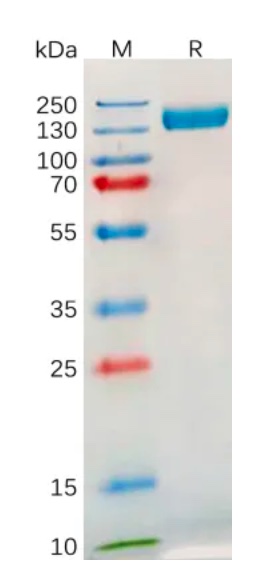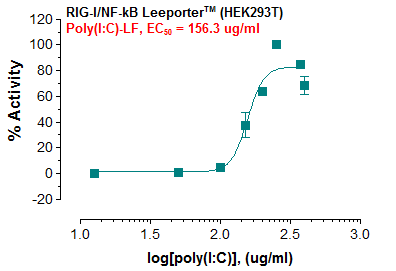Human BIN1 / Amphiphysin-II Recombinant Protein (His Tag)(Discontinued)
Shipping Info:
For estimated delivery dates, please contact us at [email protected]
| Amount : | 100 µg |
| Purification : | > 85 % as determined by SDS-PAGE |
| Content : | Formulation Lyophilized from sterile 20mM Tris, 10% glycerol, 1mM DDT, pH 8.0 Normally 5 % - 8 % trehalose, mannitol and 0.01% Tween80 are added as protectants before lyophilization. |
| Storage condition : | Store it under sterile conditions at -20°C to -80°C. It is recommended that the protein be aliquoted for optimal storage. Avoid repeated freeze-thaw cycles. |
| AA sequence : | Met1-Pro424 |
| Alternative Name : | AMPH2 Protein, AMPHL Protein, SH3P9 Protein, |
Source : E. coli
Amphiphysin 2, also named bridging integrator-1 (BIN1) or SH3P9, Amphiphysin2/BIN1 is a crescent-shaped N-BAR protein playing a key role in forming deeply invaginated tubes in muscle T-tubules, has been recently implicated in rare and common diseases affecting different tissues and physiological functions. BIN1 downregulation is linked to cancer progression and also correlates with ventricular cardiomyopathy and arrhythmia preceding heart failure. Increased BIN1 expression is linked to increased susceptibility for late-onset Alzheimer's disease. In addition, altered splicing may account for the muscle component of myotonic dystrophies, while recessive germinal mutations cause centronuclear myopathy. Bridging integrator 1 (BIN1) as a late-onset Alzheimer's disease (AD) susceptibility gene. There are at least 15 different known isoforms of BIN1, with many being expressed in the brain including the longest isoform (iso1), which is brain-specific and localizes to axon initial segments and nodes of Ranvier. The bridging integrator 1 (BIN1) tumor suppressor encodes multiple alternatively spliced isoforms implicated in DNA repair, cell-cycle control, apoptosis and membrane dynamics.
Amphiphysin 2, also named bridging integrator-1 (BIN1) or SH3P9, Amphiphysin2/BIN1 is a crescent-shaped N-BAR protein playing a key role in forming deeply invaginated tubes in muscle T-tubules, has been recently implicated in rare and common diseases affecting different tissues and physiological functions. BIN1 downregulation is linked to cancer progression and also correlates with ventricular cardiomyopathy and arrhythmia preceding heart failure. Increased BIN1 expression is linked to increased susceptibility for late-onset Alzheimer's disease. In addition, altered splicing may account for the muscle component of myotonic dystrophies, while recessive germinal mutations cause centronuclear myopathy. Bridging integrator 1 (BIN1) as a late-onset Alzheimer's disease (AD) susceptibility gene. There are at least 15 different known isoforms of BIN1, with many being expressed in the brain including the longest isoform (iso1), which is brain-specific and localizes to axon initial segments and nodes of Ranvier. The bridging integrator 1 (BIN1) tumor suppressor encodes multiple alternatively spliced isoforms implicated in DNA repair, cell-cycle control, apoptosis and membrane dynamics.
|
There are currently no product reviews
|



















.png)









